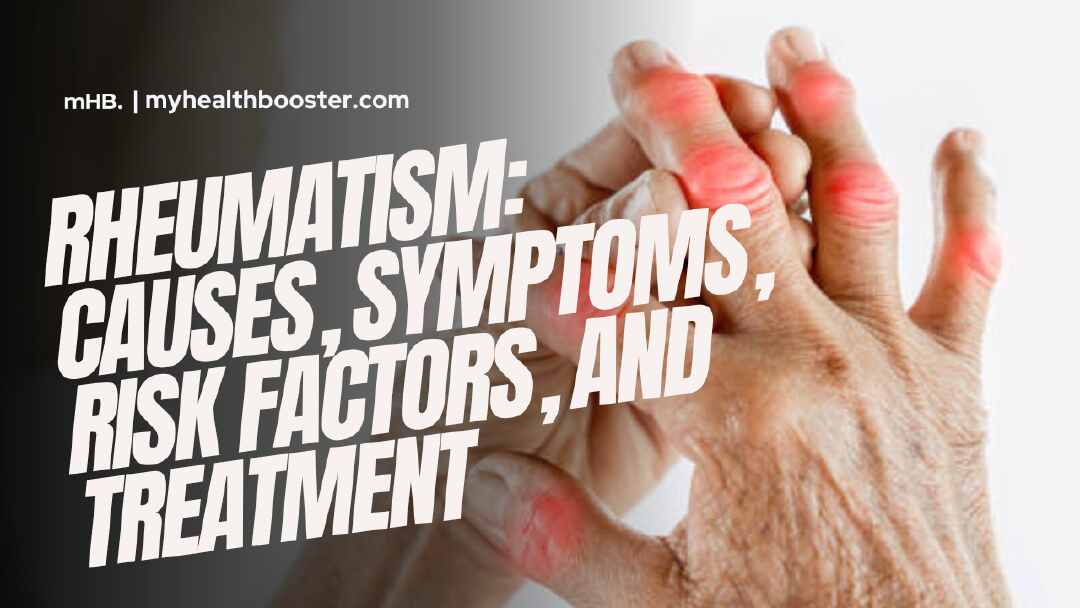Rheumatism is a term used to describe a variety of painful conditions that affect the joints, muscles, tendons, ligaments, and other parts of the musculoskeletal system. This umbrella term covers a range of disorders, including arthritis, and is characterized by symptoms such as joint pain, stiffness, and inflammation. In this article, we will delve into the causes, symptoms, risk factors, and treatments for rheumatism, shedding light on this often misunderstood condition.
What is the Main Cause of Rheumatism?
Rheumatism is not caused by a single factor but rather encompasses a group of conditions with diverse origins. Some common causes and contributing factors include:
- Autoimmune Reactions: Many forms of rheumatism, such as rheumatoid arthritis (RA) and lupus, are autoimmune diseases. In these conditions, the immune system mistakenly attacks healthy joint tissues, leading to inflammation and damage.
- Infections: Certain infections, such as Lyme disease, can trigger rheumatic symptoms.
- Genetics: A family history of rheumatic diseases can increase your risk of developing them.
- Age: As people age, the risk of developing rheumatism increases. Osteoarthritis, a common type of rheumatism, is often associated with aging.
- Environmental Factors: Exposure to environmental factors like smoking or exposure to certain pollutants may increase the risk of rheumatic conditions.
What Are the Signs of Rheumatism?
The signs of rheumatism can vary widely depending on the specific condition, but common symptoms include:
- Joint Pain: Persistent joint pain, which may be localized or affect multiple joints, is a hallmark of many rheumatic diseases.
- Joint Stiffness: Morning stiffness and reduced range of motion in affected joints are common.
- Swelling and Inflammation: Inflammatory forms of rheumatism can lead to joint swelling, redness, and warmth.
- Fatigue: Chronic pain and inflammation can lead to significant fatigue.
- Muscle Weakness: Rheumatism can lead to muscle weakness and wasting, particularly in conditions like polymyositis.
- Fever: Some rheumatic diseases, such as lupus, may cause fever and other flu-like symptoms.
- Skin Changes: Skin rashes, particularly a butterfly-shaped rash across the cheeks and nose (malar rash), can occur in certain rheumatic diseases.
Can Rheumatism Be Cured?
The outcome for individuals with rheumatism varies depending on the specific condition, its severity, and how early it is diagnosed and treated. While there may not be a single “cure” for all forms of rheumatism, many individuals can effectively manage their symptoms and improve their quality of life through various treatments. Treatment options may include:
- Medications: Nonsteroidal anti-inflammatory drugs (NSAIDs), disease-modifying antirheumatic drugs (DMARDs), biologics, and corticosteroids are commonly used to manage symptoms and inflammation.
- Physical Therapy: Physical therapy can help improve joint function and reduce pain.
- Lifestyle Modifications: Maintaining a healthy weight, engaging in regular exercise, and managing stress can be beneficial.
- Surgery: In severe cases or when joints are significantly damaged, surgical interventions like joint replacement may be necessary.
- Complementary Therapies: Some individuals find relief through complementary therapies like acupuncture, massage, or dietary supplements. However, these should be used in conjunction with conventional medical treatment.
What is the Difference Between Arthritis and Rheumatism?
The terms “arthritis” and “rheumatism” are often used interchangeably, but they have subtle differences:
- Arthritis: This term specifically refers to inflammation of the joints. There are many types of arthritis, including rheumatoid arthritis, osteoarthritis, and juvenile arthritis. Arthritis is just one component of rheumatism.
- Rheumatism: This is a broader term that encompasses a range of musculoskeletal conditions, including arthritis. Rheumatism includes any disorder that leads to joint pain, muscle pain, and soft tissue swelling.
In essence, all arthritis is a form of rheumatism, but not all rheumatism is arthritis. Arthritis refers to the inflammation of joints, whereas rheumatism is a more general term encompassing a wide array of musculoskeletal disorders affecting joints and surrounding tissues.
Conclusion
Rheumatism is a complex and diverse group of conditions that can affect anyone. Early diagnosis and appropriate management are key to controlling symptoms and preventing long-term joint damage. If you suspect you have symptoms of rheumatism, consult with a healthcare professional for a proper evaluation and personalized treatment plan.
